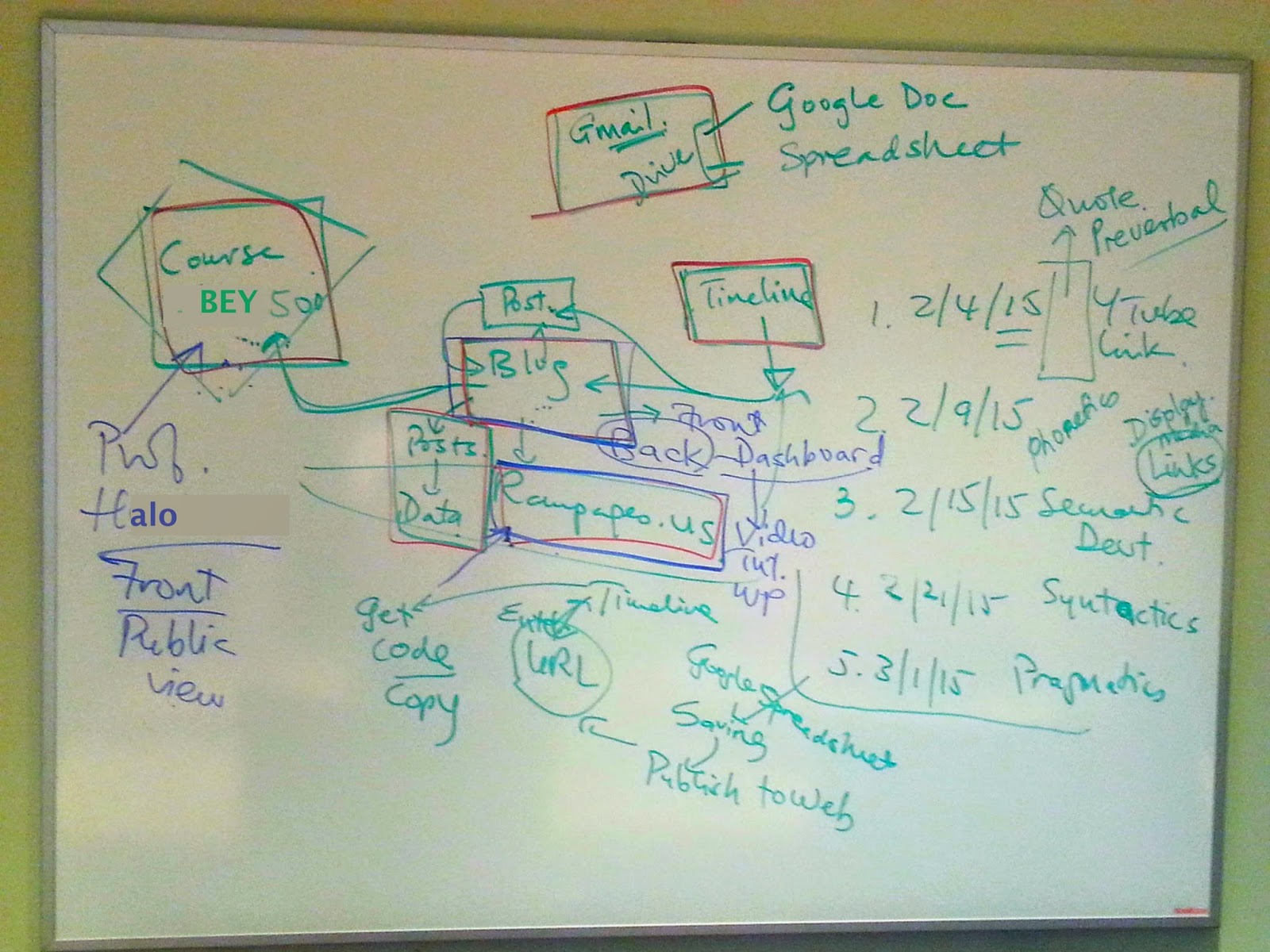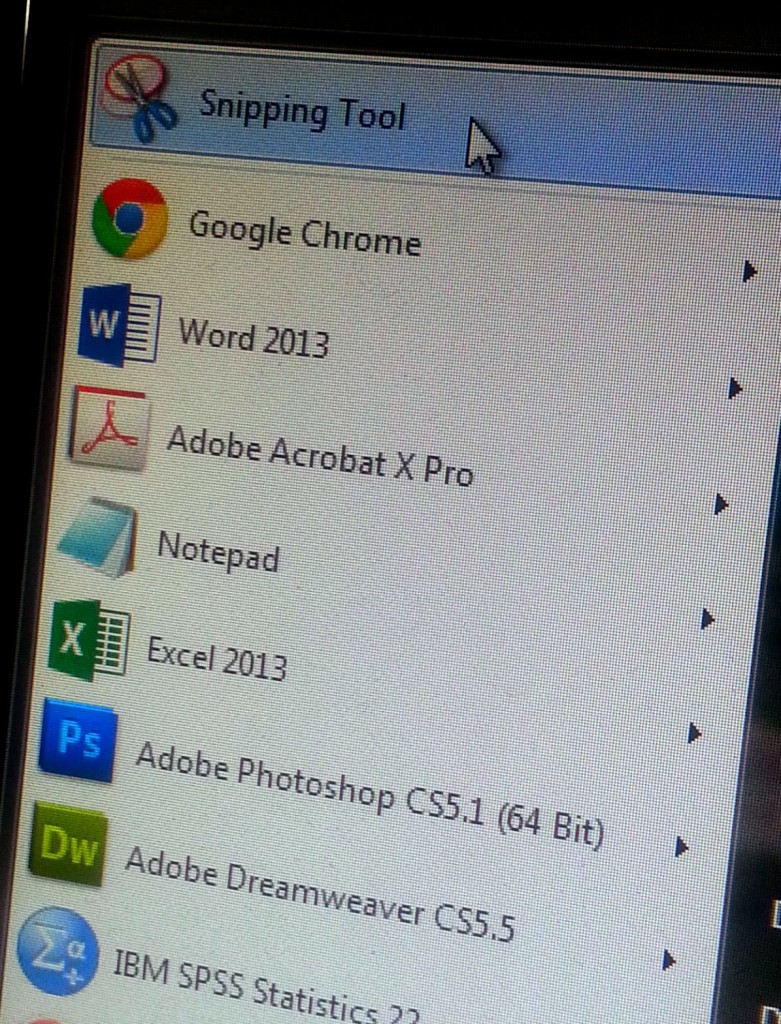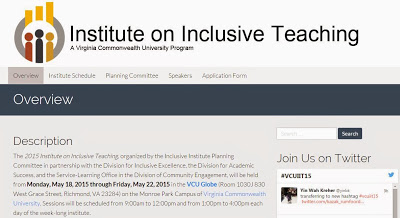A Bold Experiment: Live-Skim-Tweet Journal Article #tjc15
Laura Gogia, a.k.a @GoogleGuacamole, my ALT Lab colleague (NOT a Google App as one of my Twitter friends thought!) invited me to her community’s experiment to live-tweet reading a journal article. I needed little persuasion because #1. I enjoy Twitter chats and #2. I am highly curious and like to learn new things. It turned out to be a thoughtful learning experience.There are 2 dimensions about the event I’m going to highlight in this blogpost and a third one I would need to think a bit more about:
1. The Article (pdf)
Personally, one of the big gains of this experience is the article; knowing about it, interacting with the ideas of the authors and with others who read/were reading the article. In this new connectivist learning paradigm, the role of the teacher in MOOCs has been a subject of some private consideration and discussing it openly is progress for the field of open access education.
By themselves, MOOCs do not all fit a simple typology; either as an xMOOC or a cMOOC (Ross, Sinclair, Knox, Bayne & Macleod, 2014). There are “fifty shades of MOOCs” (Just kidding!). Anecdotally, I’ve participated in several MOOCs on various platforms, and they’ve been noticeably different to me, even for some of those hosted within the same platform. Suffice to say, as a grand experiment, the various components of a MOOC — the teacher(s), learners, learning activities, assessment, etc. — are worth examining. But as the authors rightly indicated, the role of a MOOC teacher — allegedly a rock-star, co-learner, or an automated assessor of learning tasks — is nuanced. To downgrade teaching to only “facilitation” (Ross, Bayne, Macleod & O’Shea, 2011) in cMOOCs does not capture the fullness and richness of what teaching is all about, in all contexts. Just as every learner is different and we have Differentiated Instruction, Universal Design for Learning and multiple learning theories to attempt to explain the intricacies in learning and teaching, we need more dialogue on the role of a MOOC teacher. After all, MOOCs don’t seem to be disappearing from the learning horizon in the immediate future.
Here are two quick thoughts I have after reading the article:
- Are MOOCs and online education to be regarded as subsets, one of the other, or do they just overlap along some dimensions? This is significant because at some point, the article appears to suggest a discussion of the role of the MOOC teacher would have some implications for our thinking about the role of the online teacher (pg. 62):
From our earliest conversations as a team, in Spring 2012, about whether we could develop a MOOC, and how this would challenge and refine our beliefs about good practices in online education, this has been a process of critical experimentation.
My perspective is that online learning can have degrees of in-person teaching components different from most MOOCs. Online education can include blended learning (sometimes called hybrid learning) components with some mandatory in-state residency hours. Online courses can also be crafted using different modalities. Some are entirely synchronous in nature, and not all online courses are massive, even though they may have large enrollments. When we use the term online courses or online education, they are typically used in reference to institutional online education programs designed to confer specific credentials upon program completion. Although MOOC providers are now experimenting with signature courses with a targeted sequence that leads to specialization certificates, MOOCs and online education are not synonymous.
MOOC participants tend to have significant years of formal education, “just over 60% had post-graduate level qualifications” (p. 63). Most of these students participate in MOOCs to learn something new — highly motivated non-traditional(?) students — not to check off a list of program requirements.
The above-mentioned factors may distinguish the role and responsibilities of online teacher(s) from MOOC teachers. What we learn from this article about MOOC teachers may have some implications for online teachers, but I’d comment that the two terms — MOOCs and Online Education — are quite distinct from each other.
- Teacher identity received a fair bit of discussion both within the article and during the Twitter chat. Watson (2009, cited in Ross et al, 2014) singled out three related sites for academic identity — the department, the institution (Aren’t these both the professional sites where a teacher enacts his/her role(s)?) and the personal/professional context. To me, the personal and the professional facets of a teacher’s life are entwined and the sum of these experiences shape her teaching and teacher identity. A teacher who says s/he could easily disentangle the personal from the professional in her teaching roles and responsibilities is begging the question, “What makes one a teacher?” I’d say ALL of his/her life experiences, but Parker Palmer would say, [Catherine Cronin cited him in a tweet], We teach who we are (Parker, 2007).
Like Parker, I ask, “Who is the self that teaches?” because “the human heart– is the source of good teaching.” Many or most educational institutions prize the intellect of teachers, oftentimes neglecting the emotional and spiritual dimensions of teaching, tying academic identity to research accomplishments, less to teaching efforts. Erroneously, not to recognize and support the other dimensions of the teacher’s life is to bankrupt him/her; and as Ross et al mention, is to diminish and mischaracterize the teacher.
Ross et al disclosed the authentic but ambivalent feelings they had as new MOOC teachers: anxiety, excitement and vulnerability in negotiating the newness of the experience. I hope they follow up on the question they posed to MOOC teachers: “How can we provide reassuring and recognizable evidence of our attention earlier?” Not an easy question to answer for sure at a site with thousands of participants, but I feel connection with students trump co-participation and co-learning pedagogical approach. Insert a course introduction video into the course right at the beginning where every MOOC teacher is presented and schedule a Google Hangout ASAP.
2. Doing the Event
I had little expectations for the event and even less preparation. Laura told me I didn’t need to read in advance and I’d participated in Twitter chats before, so I thought I was “prepared” for the event. When the time came, I showed up “online,” calm but eager to see how it would all unfold. Laura provided some tips for event setup, so I tried to highlight chunks of text for discussion, using Acrobat X Pro and my free Windows snipping tool. Here’s the visual for Jeffrey Keefer who asked about the tool:
What was unusual about this event is the fact that it was touted as a live reading event. It’s somewhat paradoxical for me to read and talk at the same time. Reading is a silent time for me, outwardly. My mind is far from silent, and so the busyness of tweeting, reading (skimming really!) and interacting with other participants was quite a cognitive overload for me (and maybe me alone). In other Twitter chats I’ve participated in, we were given questions ahead of time to prepare for the chat if we wanted to. There was an agenda set up ahead of time. This live-tweet reading event was rather disorienting for me because of the nature of the reading material. It was rich, complex and full of interesting quotes. As it is right now, in its present format and form, I feel that the pace of Twitter interactions and communication does not do a rich journal-article-reading justice. We did retrieve some gems from the article. We raised a few interesting ideas, but the depth of exchange that I was expecting escaped me. I had expected more from my own history of having participated in journal article discussions in person. (Maybe it is me who needs to change?) Several threads of conversation were going on at the same time; threads I couldn’t make sense of because the other participants could be or maybe were talking about some quote or phrase from the article I wasn’t present when it began. I recall just pausing at one point and wondering what was going on. Where could I chip in and how do I answer some of these questions posed at me which didn’t seem very related to the quotes I had pulled out? Is this my singular experience? How did the other participants who were not involved in the planning of the event feel? Had their previous discussions prepared them differently for this event?
Looking back, a live-read-tweet-and-comment experience might appear to be a rather incompatible combination. But tweaking the event a little could help. For example, reading ahead of time would have helped me tremendously. Maybe preparing some questions and posting it ahead of time would also help guide the discussion so it would feel less kafkaesque, not in the menacing sense, but it would provide some structure to make it less confusing.
This is not to say I didn’t learn or benefit from this experience. I did. AFTER the event, I was very eager to read the article in solitude, and with great care, dwelling on the points and reflecting on some of them considerably. The event heightened interest in more attentive reading. I wanted to interact with the ideas a bit more.
I was certainly glad Laura storified the tweets, and we could access them to reflect a little more later. The hashtag also continues to have a life of its own. For me, I’d continue to add to it when it’s appropriate and would follow up on some of the suggested readings.
3. What Next?
I’d participate in another #tjc15 event but I’d read ahead of time. I would highlight quotes for discussion and plan for it with some questions of my own, just so I could have the opportunity to raise ideas that I’d understand more completely in the context of the whole article. Not reading the article in advance means I was just skimming and jumping from a chunk of text to another, and this doesn’t situate the meaning of the ideas in the entirety of the whole piece. (I’m grasping at words to try to convey my message!)
But definitely, I’m honored to have participated in this inaugural event and am open to discussing this reflective piece further.




